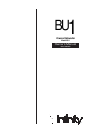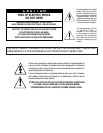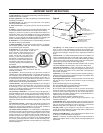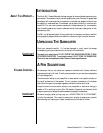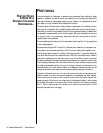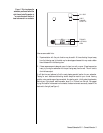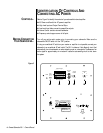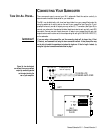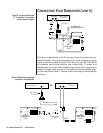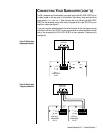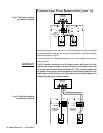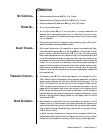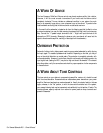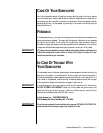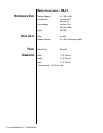
10
◆
Powered Subwoofer BU-1 – Owner’s Manual
A WORD OF ADVICE
The Low-Frequency Rolloff and Volume controls may be set anywhere within their rotation.
However, it will be a most unusual circumstance if you have to set the Volume control
completely clockwise. This may indicate an unbalanced condition in your system (too much
bass) or an especially large room or room placement may not be correct. Try several other
locations before concluding that the Volume control must be set at maximum.
In the event that the subwoofer is located so far from the listening area that its effect is not as
prominent as desired, you may find that reversing the phase of the High-Level Input wires may
help. Connect the “+” speaker output terminals to the “–” High-Level Input terminals of the
subwoofer on BOTH channels. (Reversing the phase on only one channel will cancel out the
signal to the subwoofer’s amplifier, resulting in less output from the subwoofer.)
OVERDRIVE PROTECTION
Automatic limiting circuitry helps prevent overdriving a connected subwoofer by softly clipping
the input signal if it exceeds a predetermined threshold. Depending on the level, you may or
may not hear slight distortion on musical peaks. This protection is completely automatic, with
no user adjustments. However, if you do hear distortion continuously while playing music, the
input signal level (feeding the BU-1) may be too high and should be lowered. If this doesn’t
solve the problem, verify the connections and check for proper operation of other components
in the audio chain.
A WORD ABOUT TONE CONTROLS
The tone controls on your electronic components (preamplifier, receiver, etc.) should be used
with the utmost discretion. Excessive boost can create severe power demands on your power
amplifier. Maximum bass boost can create a demand for literally hundreds of watts in the bass
region, whereas, in the “flat” position, or with the tone controls switched out of the system,
your average listening level may be impressively and realistically loud at less than 10 watts. The
remaining power capacity required is on reserve for power peaks on sharp transients and
powerful crescendos.



